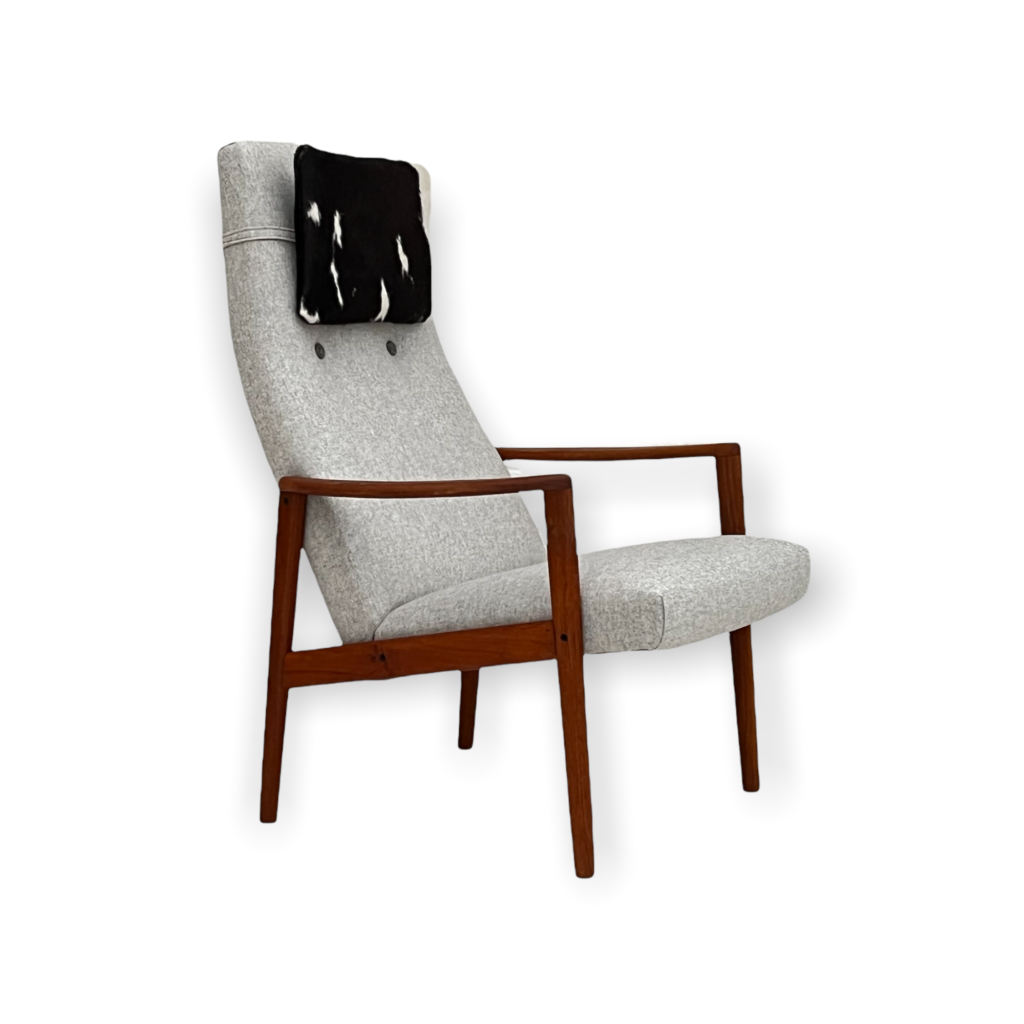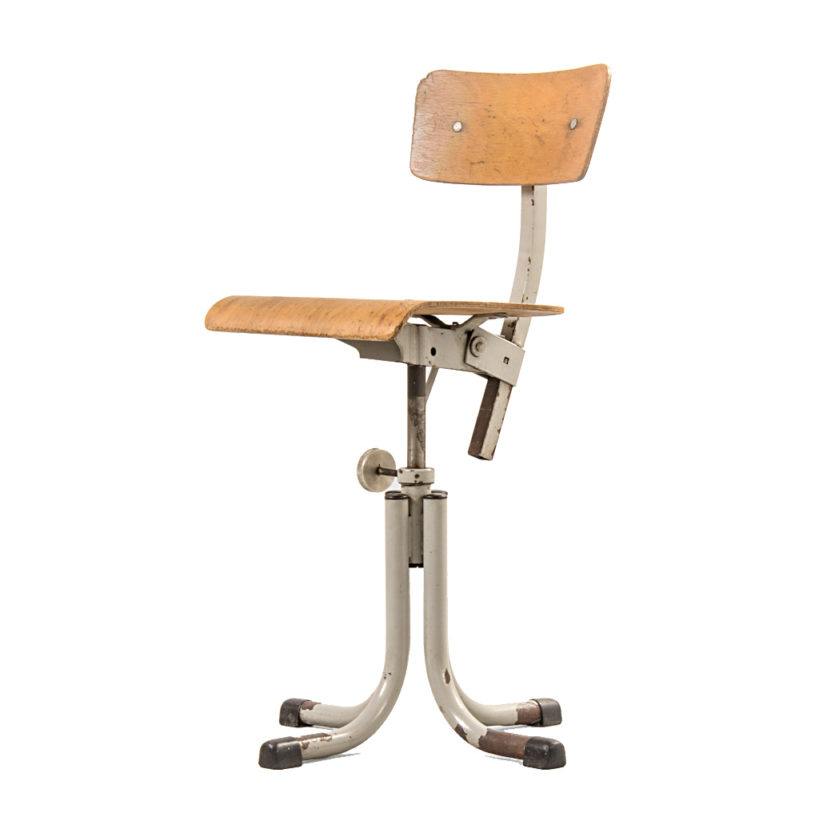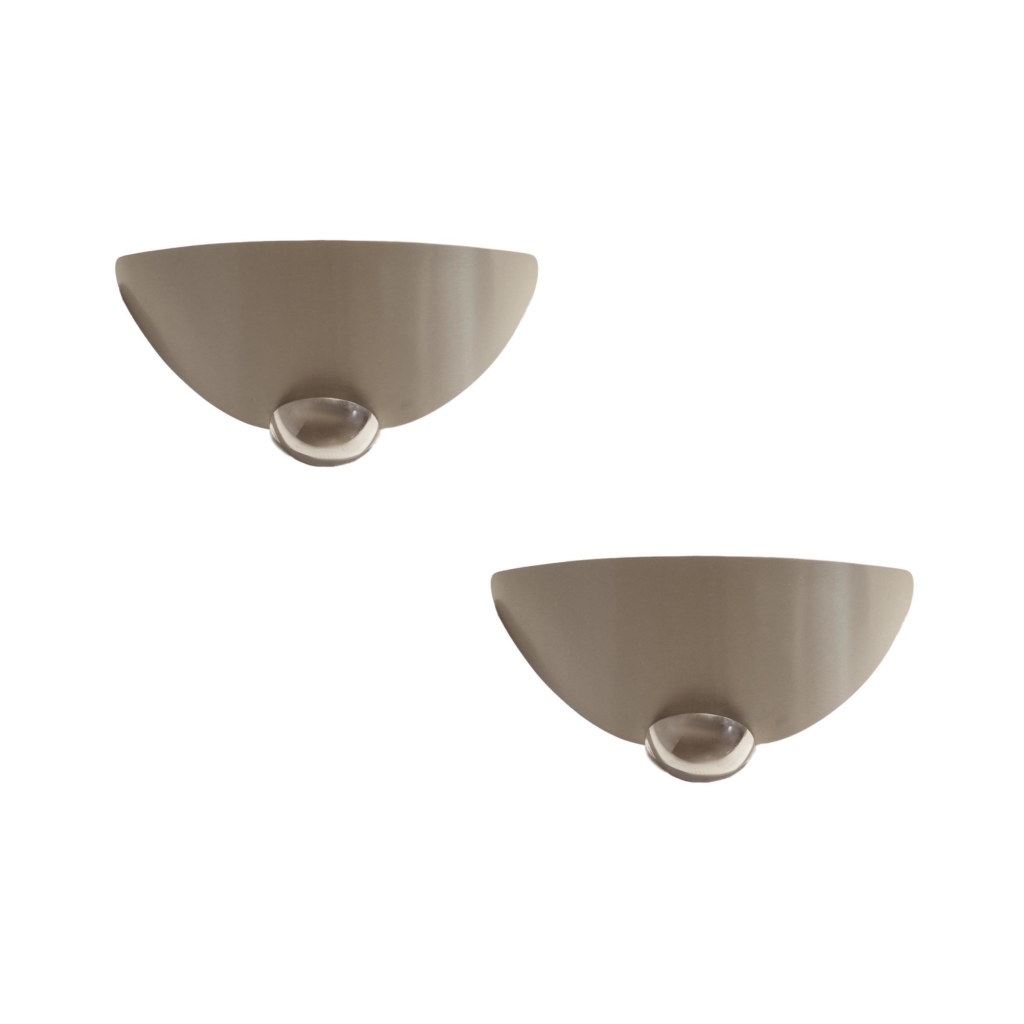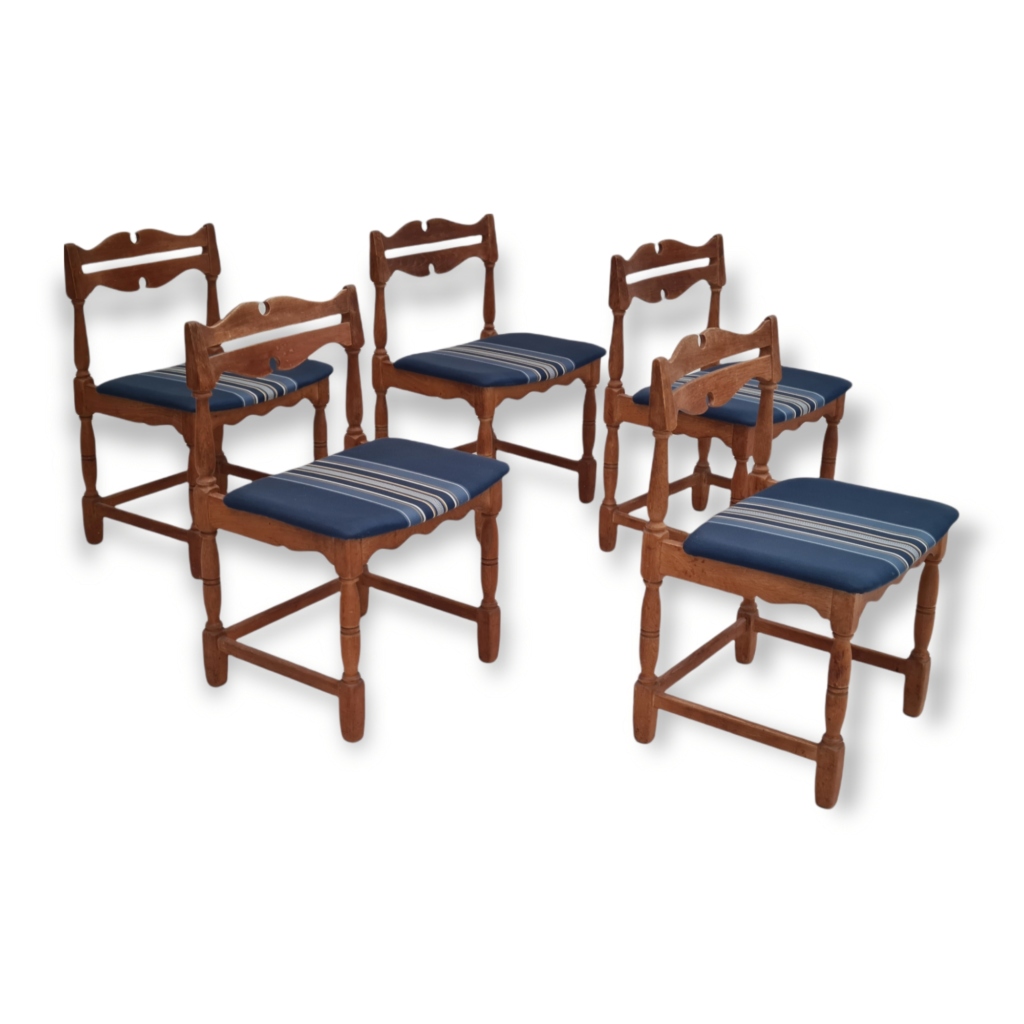I recently did some in-depth research on the long history of this chair and thought I’d share my findings here, as there are more interesting twists and turns than the typical research effort.
First I will define what “Metropolitan Chair” means in this thread. The name for this chair design arose as it was part of the successful Arts of Denmark exhibition at the Metropolitan Museum of Art in New York City in 1960, curated by Finn Juhl. This particular chair was apparently featured prominently in the exhibition and was well received, thereafter becoming known as the “Metropolitan Chair”. While the first version of this chair was actually designed 11 years earlier in 1949, I will be using this name for all versions.
Ironically, the notoriety of this chair did not prevent a mixup in the museum database, as they had inadvertently flipped designer attribution of this chair with a Jacob Kjaer chair. I recently notified them of this mixup and they corrected it last weekend. For fun, I saved the mixed up attributions before the correction (reformatted for posting here to reduce blank space)
While the 1960 Met chair was made by the cabinetmaker, Willy Beck, there are actually five manufacturers who have made at least seven versions of this chair design over the years, including a mystery one. . . 

Ludvig Pontoppidan: 1949
The first time Ejner Larsen and Aksel Bender Madsen introduced this chair design was in 1949 Guild Exhibition, through the cabinetmaker, Ludvig Pontoppidan. While these architects were best known for their long-term collaboration with Willy Beck, there were also a few years where they did designs for Pontoppidan for the same exhibitions.
The signature design form, which is present in all four manufacturer versions, is the backrest and arm design, made here from a single piece of twisting laminated wood.
The Pontoppidan version has a teak frame with rosewood feet, with a lacquer finish on the laminated backrest/arm and seat. The seat is roughly oval shaped and visually floats above cross rails underneath. A loose seat pad with button is included.
I believe a very limited number of examples of this design were ever made by Pontoppidan. It is possible that only four were ever made, as there are quite a few examples of furniture made for the exhibitions that never went into production. There is one currently for sale by Modern.dk in Copenhagen that claims their chair was one of the original four that was in the 1949 booth. That chair still has the seat pad and has a dark green lacquer color. I can find no other example online.
I’m not sure if a model number was ever assigned to this chair, but it was presented as an accompanying chair for a card table.
The Pontoppidan version is included in Volume 3 of the Grete Jalk “40 Years of Danish Furniture Design”.


Fritz Hansen: 1952 - 1958
Like many pieces of furniture designed for the guild exhibitions, this chair design was subsequently modified for better economics in larger scale production. Fritz Hansen’s version debuted in 1952 and had an apparent production run of five to six years.
Changes in construction from the Pontoppidan version include: 1) teak-faced laminated backrest/arms and seat, 2) concave side rails and deeply recessed front/back rails, to provide a similar floating appearance as the original cross rail design with probably better rigidity and durability properties, 3) beech framing without any separate wood feet.
There appear to be some walnut-faced laminated backrest/arms versions out there (last photo), but I cannot find any vintage documentation of a walnut option by Fritz Hansen.
This chair is included on Fritz Hansen’s website in their excellent history timeline: http://www.fritzhansen.com/en/fritz-hansen/the-republic/History
They refer to it as a “conference chair”, but do not provide a model number. However, that same Lauritz listing does show the chair underside, where a “6169” can barely be made out right next to the FH logo. This number does fit in with FH’s model numbering format, so it could be that 6169 is the model number. My Fritz Hansen catalog is from 1964, after production ended. If anyone out there has a catalog from the 1952-8 period, perhaps they can confirm what the model number is.
I forwarded this info to FH for their thoughts. I received a prompt reply, but they don’t have any catalogs during this time period themselves, so cannot verify the model number.
This Fritz Hansen chair version is included on page 189 of Danish Furniture Design in the 20th Century - Vol 1, by Arne Karlsen.


Willy Beck (main version): 1959 - ?
In an uncommon turn of events, this chair design reincarnates into its third form for the 1959 Guild Exhibition, this time made by the cabinetmaker, Willy Beck. It is not often that one cabinetmaker makes another version of a design previously done by another cabinetmaker. But in this case, the original design was a full 10 years earlier, and a larger-scale Fritz Hansen production had already come and gone in between.
Changes in construction from the previous versions include: 1) a seat that was no longer floating above, but integrated with the rails, 2) contoured “hourglass” seat rails that were developed in earlier chair collaborations between Larsen / Bender Madsen and Willy Beck, 3) a main version which had leather upholstery covering both backrest/arms and seat, and 4) exposed teak or oak framing (not sure what wood type is under the leather) with perhaps a few made in cherry. Following the lead of the earlier exposed laminated wood construction, each side of the upholstered backrest/arms is made from a single piece of leather, limiting the seams to the edges.
It is this version of the chair that was part of the Arts of Denmark exhibition, which rocketed the design to its celebrated status as the “Metropolitan Chair”.
While cabinetmaker-made, there seem to be more examples of this chair online than there are for the Fritz Hansen version. Not sure if that is indicative of how many of each were made, or of how durable each design was.
The model number is 2842/L. I am not sure how long this production run lasted.
The Willy Beck version is included in Volume 4 of the Grete Jalk “40 Years of Danish Furniture Design”.


Willy Beck (limited version): 1959 - ?
Willy Beck also made another version of this design, presumably during the same run as the main version. The limited version incorporates both a design feature from the original Pontopiddan chairs, as well as one from earlier Larsen / Bender Madsen and Willy Beck chairs.
Referring back to the finish on the original chairs, the backrest/arms and frame are both finished in a dark blue lacquer instead of leather. The seat leather has also been replaced, except with a cane weave pattern that was previously used for earlier Larsen / Bender Madsen dining chairs.
While certainly striking in appearance, it is odd that the frame and backrest/arms are finished the same, as all other versions use different finishes/woods to help highlight the difference between structural component and seating component of the chair.
Wyeth currently has a version of this chair for sale. They must have caught this chair mis-attribution bug from the Met, as they have this chair listed as made by Pontoppidan (even going so far as to say it is not a Fritz Hansen model). If there was any doubt that the details of this version indicate that it is Willy Beck made, and not Pontoppidan made, there is another limited version listed in Sweden that still has the Willy Beck tag on it.
http://www.modernity.se/armchair-metropolitan-designed-by-aksel-bender-m...
I have advised Wyeth of their attribution error. Unlike the prompt responses I received from the Met, I have yet to hear back from them, and their listing has not changed as of this posting.
I am not sure if the wood is teak like the main version, or if it is a cheaper wood due to not being exposed to view. Also unknown is whether this limited version had a different model number, a la The Round Chair - JH501 and JH503.
I cannot find any vintage documentation of this limited version chair.


Mystery Manufacturer: 2010?
A fourth version of the chair popped up late in my research. There is a high-end store in London, Paere Dansk, who is offering new (or newish) “Metropolitan Chairs” by Larsen / Bender Madsen, without mention of a manufacturer. The only visual indication that they are not the most recent (spoiler alert) Carl Hansen production is that the chairs are offered in wenge and cherry woods, which are not standard options for Carl Hansen. I thought that they might be custom ordered chairs by Carl Hansen, but they confirmed through e-mail correspondence that these chairs were not made by them. Furthermore, they stated that the Paere Dansk versions are indeed “legitimate” and not recent knockoffs. However, they did not expand further as to who had made them.
Paere Dansk has not yet responded to my inquiries, but here is a description from a sold listing of theirs, which notes the manufactures date as "2010 under license":
This Metropolitan chair by Ejnar Larsen and Aksel Bender Madsen was by the Alderman of the Copenhagen Cabinetmakers' Guild. Having been used as a showroom model, the leather has already taken a beautiful patina and a few spots. This chair is made under license and personally approved by the estate of Aksel Bender Madsen, represented by his son, who only permits two types of leather - natural-vegeta (as pictured) and black. In addition to the chair pictured with Danish cherry legs, available from stock are a pair in black leather with wenge legs and a pair in natural-vegeta leather with wenge legs.
I’m not sure why the manufacturer for this version is being withheld, but it appears that they have been made legitimately. . . and certainly priced accordingly.


Carl Hansen and Son (Willy Beck re-issue): 2014 – present
Carl Hansen and Son is one of the few Danish manufacturers from the 1950’s that survived the lean times of the 70’s-80’s, and has maintained operations and production to the present day. In addition to continuing to offer some of their original classics, like Hans Wegner’s Wishbone, Sawbuck, and Shell chairs, they have also gradually acquired production rights to a few well-known designs originally made by others, such as Kaare Klint’s Safari Chair and Ole Wanscher’s Colonial Chair.
In 2014, Carl Hansen and Son acquired the exclusive production rights and reintroduced the design for the fifth time.
The design is very similar in appearance to the Willy Beck main leather version, with the wood type now offered in oak and walnut.
The Carl Hansen model number is LM92. Their website has a cut sheet with plenty of information including dimensions, as well as a nice short video that highlights the production process.
https://www.youtube.com/embed/_VyCjRbmDF8?rel=0
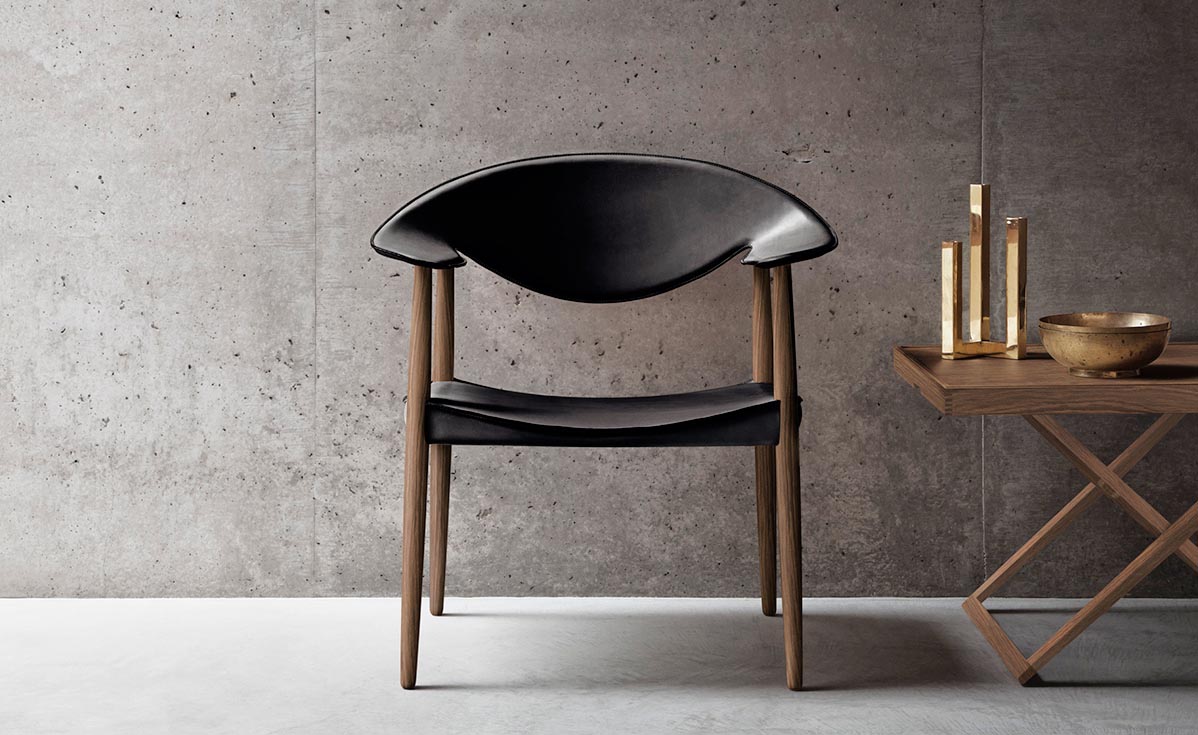

Carl Hansen and Son (new variation): starting October 2016
Finally, the most recent variation of this chair design is not yet even available for sale. Announced at this year’s Salone del Mobile Milano, Carl Hansen will be offering a version later this year which features an exposed laminated wood backrest with the same leather seat as the current version. The exposed wood and leather design is a combination that has not been offered before by previous manufacturers. Presumably Carl Hansen received permission from the estates of Larsen / Bender Madsen to offer this new version.
http://www.carlhansen.com/news/metropolitan-chair-wood-edition/
I’ll update this thread should I receive any info subsequently.
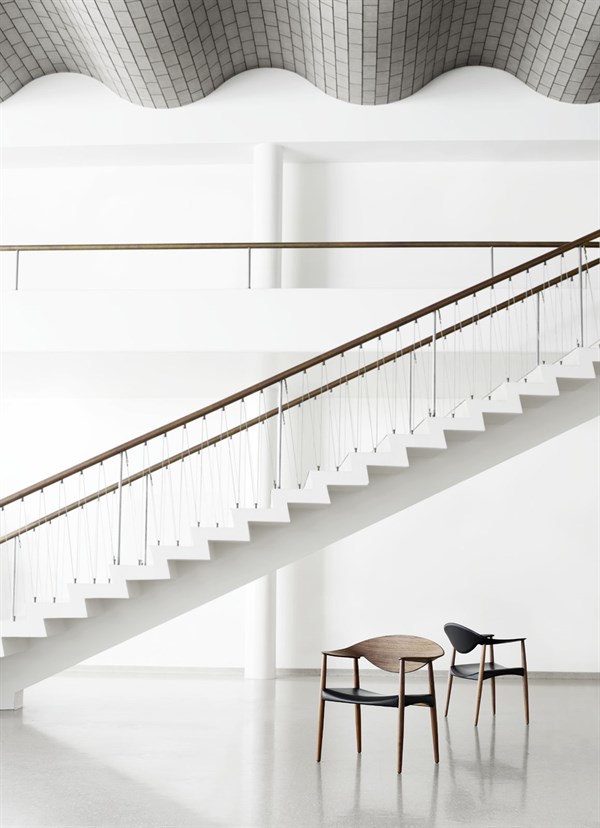
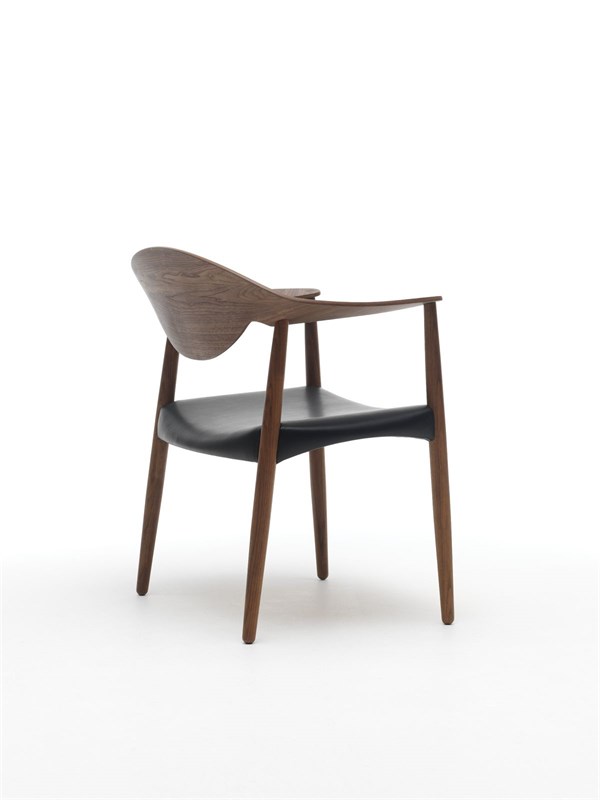
Well, I've got an update already which fills in a few blanks:
Paere Dansk just got back to me and advised that their chairs were made by Niels Roth Andersen; and by coincidence, their last pair sold just this past weekend.
To further tie up loose ends nicely, Niels Roth Andersen was acquired by Carl Hansen in July 2013, which is how the latter acquired the rights to the Metropolitan Chair:
http://www.wood-supply.dk/article/view/106938/carl_hansen_son_fortsaette...
And why not add a old photo of the designers walking down the street with their chairs . . .
I could have saved myself some time/effort if I had come across this timeline history of the chair earlier. For some reason there is no link to this timeline from the Metropolitan Chair page on Carl Hansen's website.
http://www.carlhansen.com/emag/emag-issue-03/behind-the-metropolitan-chair/
It notes that Niels Roth Andersen actually starting making the chair back in 1987. So there are probably a few examples out there that might have been mistaken as Willy Beck-made.
Bravo! I had no idea the history of this chair is complicated. I can't tell you how much I appreciate reading through this.
Here is another Niels Roth Andersen produced Metropolitan chair. It is also early for Niels Roth Andersen as he was then using the "SH EFTF, Roth Andersen Cabinetmaker" mark that he used earlier on as the successor to Søren Horn.
Also, it is interesting to see that the leather seams on this chair are "highlighted" in red.
http://www.lauritz.com/en/auction/ejnar-larsen-aksel-bender-madsen-metro...


Here is another Niels Roth Andersen. Again the contrasting colored leather edges:
http://www.bruun-rasmussen.dk/search.do?iid=300667886&aid=100000735&lang...
The Carl Hansen emag timeline has a lot of good info not mentioned above, including the red edges of the leather. Excerpt below:
The Metropolitan Chair's seat consists of a wooden frame with bone-shaped sides, providing the ideal transfer of weight from the seat to the legs.
"The seat is covered with 25 mm foam, which in turn is upholstered with saddle leather. It's not a chair one should sink into, so the foam must be highly compact. Upholstering the seat so it doesn't end up looking like a drum skin requires very special skills mastered by just two of the employees in our Aarup factory," explains Jesper Bruun.
Another important detail that had changed along the way was that the stitches used to sew the saddle leather had become longer. These stitches are now, once again, four to five millimeters long, and although this takes more time to execute, it results in a more beautiful finish.
The original chair's leather edges were also marked with a fine line of red wax. The color had changed over the years, but has now been restored to its original shade. Finally, when viewed from the front, the gentle curvature of the seat had originally resembled a smile, but had flattened out over the years. Now, the curve has been properly restored - and the smile has returned. And with good reason
Got a chance to test drive a new one in the office for a few days. First time sitting in any variation of this chair. Early thoughts:
1. Lower than my rolling Eames soft pad chair. Not the best test drive for this chair as I don't think it was intended for desk chair use.
2. It's reasonably comfortable when you sit at a specific angle: slightly leaning backwards and arms resting on the armrests.
3. When moving around in the chair, the sharp edges of the back/armrests can be felt. This is not so comfortable when leaning forward to do stuff on your desk, as the lower back can sometimes rub against the bottom edge of backrest.
4. As expected from CHS, construction quality very good.
If you need any help, please contact us at – info@designaddict.com



